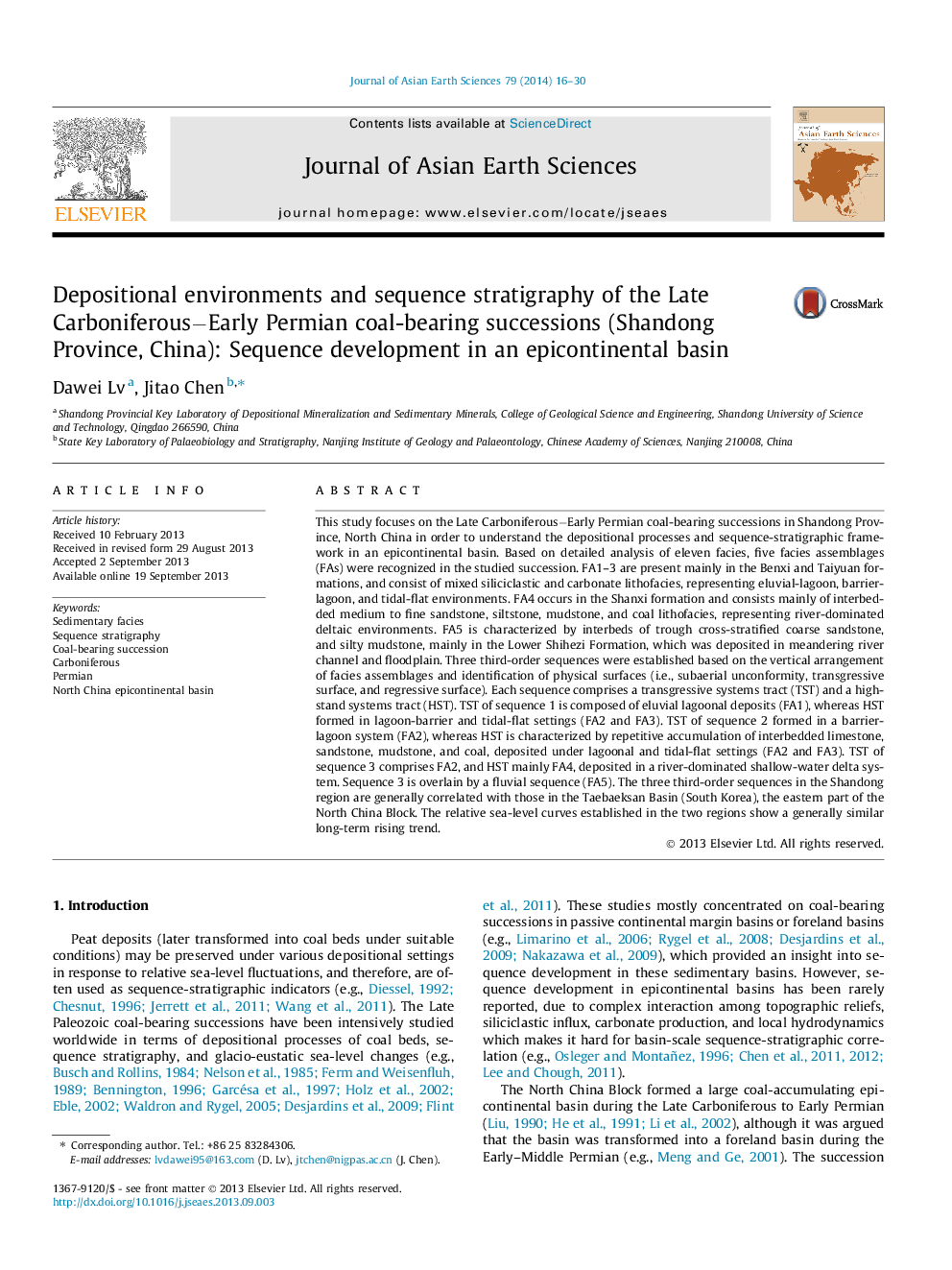| کد مقاله | کد نشریه | سال انتشار | مقاله انگلیسی | نسخه تمام متن |
|---|---|---|---|---|
| 4730888 | 1356785 | 2014 | 15 صفحه PDF | دانلود رایگان |
• Detailed facies analysis for the Late Carboniferous−Early Permian successions.
• Establish a sequence-stratigraphic framework in an epicontinental basin.
• Comparison of the relative sea-level curves in North China and South Korea.
This study focuses on the Late Carboniferous−Early Permian coal-bearing successions in Shandong Province, North China in order to understand the depositional processes and sequence-stratigraphic framework in an epicontinental basin. Based on detailed analysis of eleven facies, five facies assemblages (FAs) were recognized in the studied succession. FA1–3 are present mainly in the Benxi and Taiyuan formations, and consist of mixed siliciclastic and carbonate lithofacies, representing eluvial-lagoon, barrier-lagoon, and tidal-flat environments. FA4 occurs in the Shanxi formation and consists mainly of interbedded medium to fine sandstone, siltstone, mudstone, and coal lithofacies, representing river-dominated deltaic environments. FA5 is characterized by interbeds of trough cross-stratified coarse sandstone, and silty mudstone, mainly in the Lower Shihezi Formation, which was deposited in meandering river channel and floodplain. Three third-order sequences were established based on the vertical arrangement of facies assemblages and identification of physical surfaces (i.e., subaerial unconformity, transgressive surface, and regressive surface). Each sequence comprises a transgressive systems tract (TST) and a highstand systems tract (HST). TST of sequence 1 is composed of eluvial lagoonal deposits (FA1), whereas HST formed in lagoon-barrier and tidal-flat settings (FA2 and FA3). TST of sequence 2 formed in a barrier-lagoon system (FA2), whereas HST is characterized by repetitive accumulation of interbedded limestone, sandstone, mudstone, and coal, deposited under lagoonal and tidal-flat settings (FA2 and FA3). TST of sequence 3 comprises FA2, and HST mainly FA4, deposited in a river-dominated shallow-water delta system. Sequence 3 is overlain by a fluvial sequence (FA5). The three third-order sequences in the Shandong region are generally correlated with those in the Taebaeksan Basin (South Korea), the eastern part of the North China Block. The relative sea-level curves established in the two regions show a generally similar long-term rising trend.
Journal: Journal of Asian Earth Sciences - Volume 79, Part A, 5 January 2014, Pages 16–30
